Fleur Andreas is a member of The Society of Designer Craftsmen and The West Surrey Guild of Spinners, Weavers and Dyers. She studied textile design, specialising in weave, at the University College for the Creative Arts in Farnham. Using natural yarn, her nature inspired textiles explore colour, pattern, structure and texture. More recently she has been included in the celebrated design book ‘[easyazon_link asin=”1851777083″ locale=”UK” new_window=”default” nofollow=”default” tag=”wwwtextileart-21″ add_to_cart=”default” cloaking=”default” localization=”default” popups=”default”]Handmade in Britain ‘ by Piyush Suri.
Here Fleur talks to us about her route to becoming an accomplished weaver, her fascination with nature and the evolution of her work.
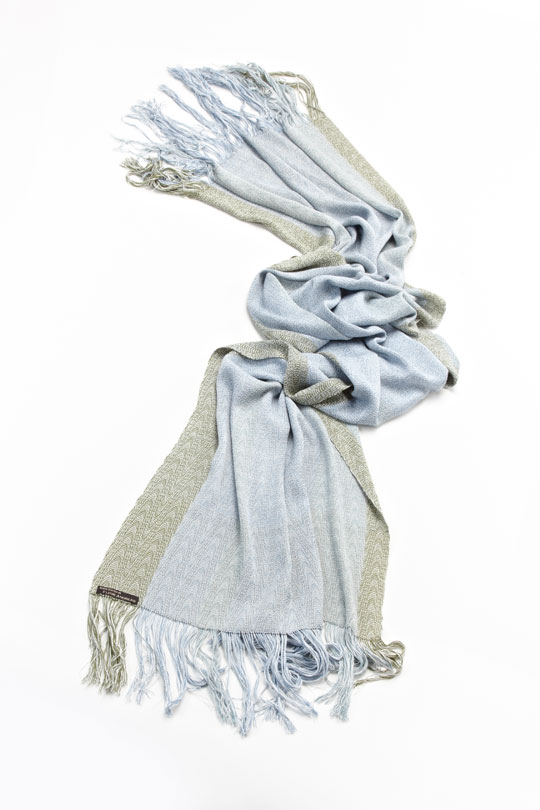
A natural progression
TextileArtist.org: What initially captured your imagination about textile art?
Fleur Andreas: The astonishing variety of colour, texture, structure and pattern that is possible with textiles, and the employment of traditional skills and methods to create beautiful and unusual fabric.
What or who were your early influences and how has your life/upbringing influenced your work ?
As a child I loved to dance, and the rhythm and fluidity of movement has stayed with me and expresses itself in my artistic endeavours. This first manifested itself in my interest in pottery when my children were small, and I developed as a potter under the tutelage of Cornelia Ahearn for some years. Among others, I admire Tim Andrews’ stunning Raku colours and the form of Ruthanne Tudball’s ceramics, as well as the work of Cornelia Ahearn.
Textiles were for me a natural progression from ceramics.
What was your route to becoming an artist? (Formal training or another pathway?)
I attended, what was then, University College for the Creative Arts in Farnham for an Access year. I thoroughly enjoyed the textile module in particular and this led to me studying for a Textile Design degree, specialising in weave. As a mature student this was distinctively challenging, but also totally absorbing.
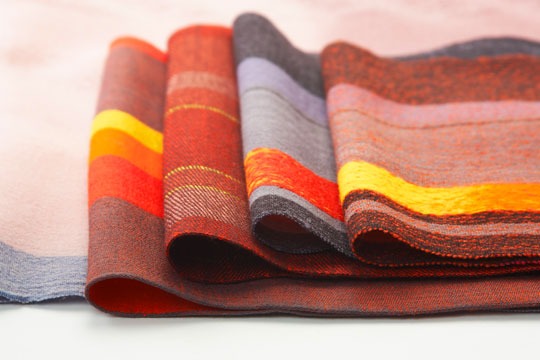
What is your chosen medium and what are your techniques?
I am a weaver with a particular love of the almost ethereal, delicate quality of fine yarns, working mostly with natural fibres such as merino, silk and bamboo. I dye all my yarn myself and weave using either my Harris table loom or my countermarch floor loom. After finishing and washing, each piece is tentered.
How would you describe your work and where do you think it fits within the sphere of contemporary art?
As a traditional dyer and hand-weaver always seeking to improve my skills to produce beautiful fabric, I am not sure I can say how my work fits within the sphere of contemporary art. No doubt my peers are better placed to judge this objectively.
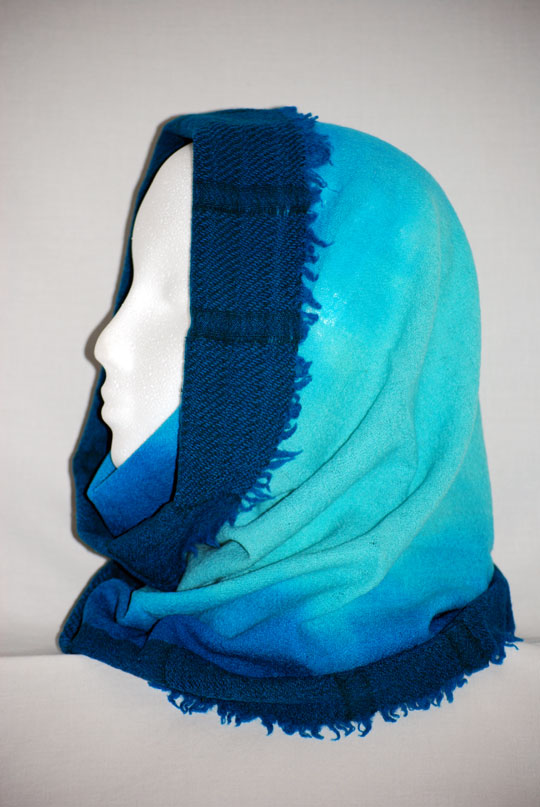
Recording the fleeting moment is vital
Tell us a bit about your process and what environment you like to work in?
A lot of time is spent in design preparation, sketching and planning. I like to carry my camera with me and a pad and pencil to capture anything that inspires me. It is often the unexpected that sparks an interest, and recording the fleeting moment is vital.
Days can be spent dying yarn to obtain the required shades of colour. There is a lot of yarn winding and calculating involved, both for the dying and for the setting up of the loom. My weaving room is my special space, with shelves for my books and yarn as well as housing my loom and other weaving paraphernalia. I quite often listen to the radio when I am weaving and sometimes our cat will keep me company.
What currently inspires you and which other artists do you admire and why?
The beauty of nature is a constant source of inspiration, although I am always on the lookout for unusual patterns or colour combinations that are found also in city life.
I am indebted to Sue Hartree who was one of my tutors at Farnham and whose exquisitely fine, natural weaving is a constant motivation for me; Tim Parry-Williams, a very talented weaver and teacher with whom I had some work experience whilst I was at University; Margot Selby who also taught me for a period and whose exciting colours inspired me; Peter Collingwood for his skill and woven structure; the complete commitment and traditional values of Ethel Mairet; the colours in the paintings of Kandinsky and the delicate line drawings of Leonardo da Vinci; the incredibly delicate weaving of Michiko Uehara of translucent, silk textiles that are so very fine and ethereal; the natural dying of Sachio Yoshioka.

Tell us about a piece of work you have fond memories of and why?
The paintings of my uncle, the artist Anthony Pyke. One picture in particular, “Waterfall”, which was his wedding gift to my husband and me. The precision of his work, the colour and structure, continue to be an inspiration to me and a constant reminder of Tony’s encouragement to me in my artistic endeavours.
Nature inspired textiles
How has your work developed since you began and how do you see it evolving in the future?
There is never enough time to explore all the ideas and methods involved in weaving. My most recent pieces have been a series of wall hangings, which have developed as symbolic pictures in weave.
I am, as yet, only a novice spinner and that is something that I really want to improve so that I will be able to weave with my own spun yarn. Another of my ambitions is to somehow combine my pottery and my textile skills.
With each project that I work on I hope to produce something of beauty that will give pleasure to others.
Do you give talks or run workshops or classes? If so where can readers find information about these?
No, I do not give talks or run workshops but if anyone is interested in my work I have a website: www.fleurdesign.co.uk.
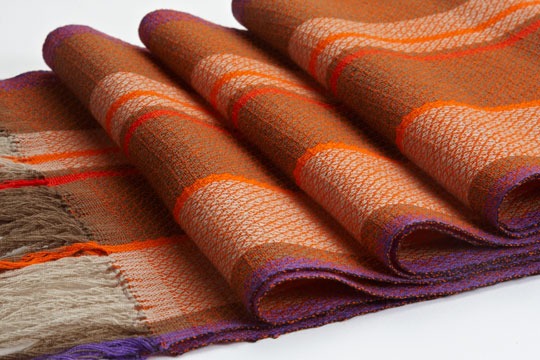
How do you go about choosing where to show your work?
The environment needs to be compatible with my aims, somewhere that my handmade pieces will not be out of place. I have been fortunate to be able to show my work in galleries both locally and in London. Opportunities have usually arisen through contact with the Guilds to which I belong: the West Surrey Guild of Weavers, Spinners and Dyers, and as a Member of the Society of Designer Craftsmen. Proximity has to be a practical consideration and of course the expense involved.
Where can readers see your work this year?
I exhibited at the Mall Galleries in January this year with the Society of Designer Craftsmen.
From 21st April – 2nd May some of my work will be showing at Clandon Park near Guildford, Surrey, at the Weavers, Spinners, and Dyers Exhibition “The Joy of Textiles – from Thread to Fabric”
Readers might also be interested to see the book “Handmade in Britain” in which I am featured. It was edited by Piyush Suri and published by Vivays Publishing.
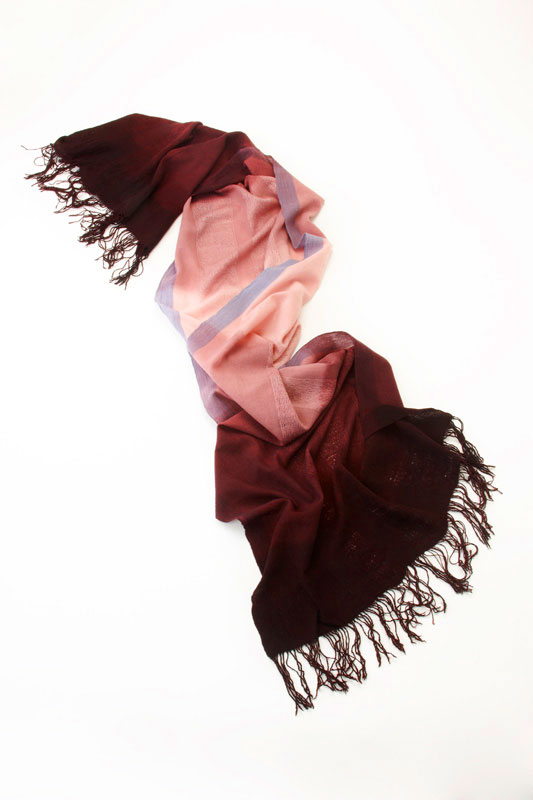
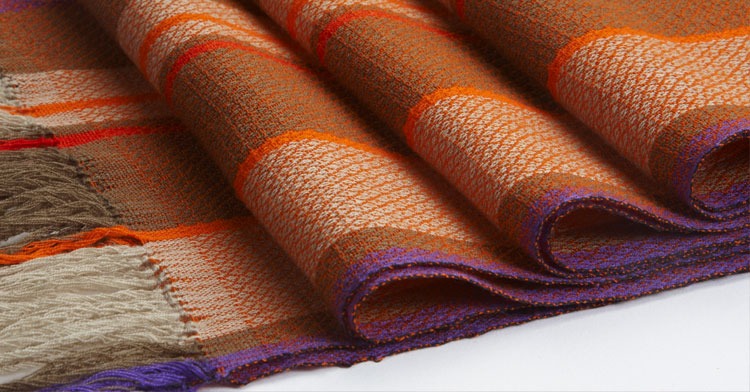
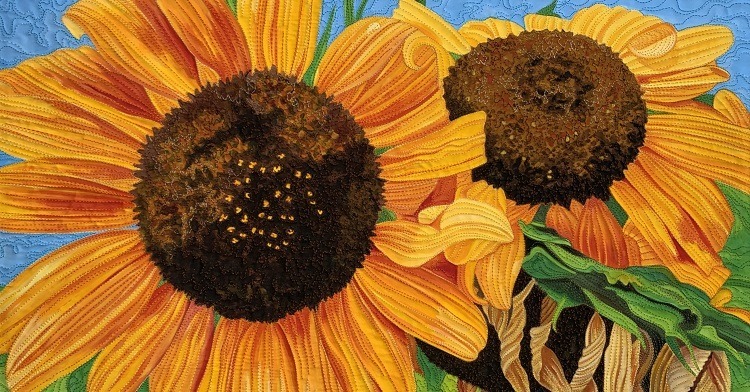
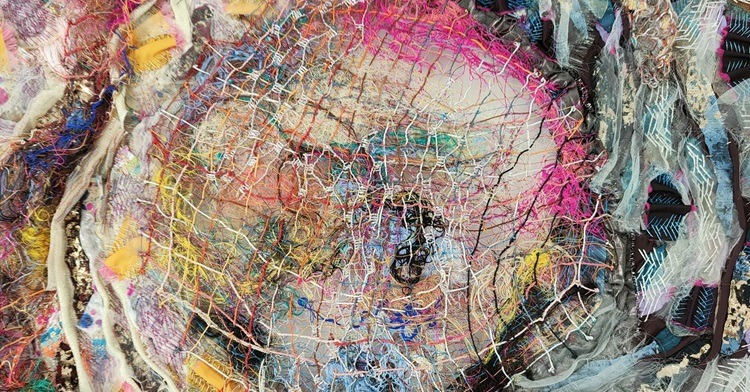
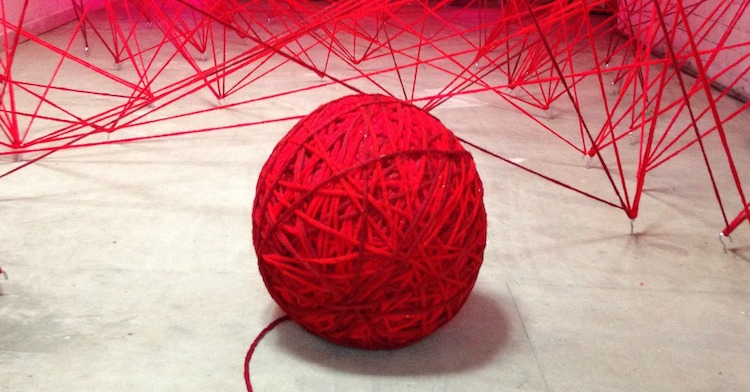
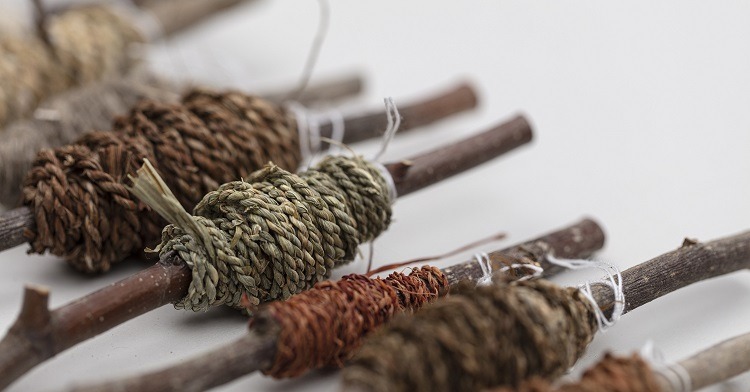
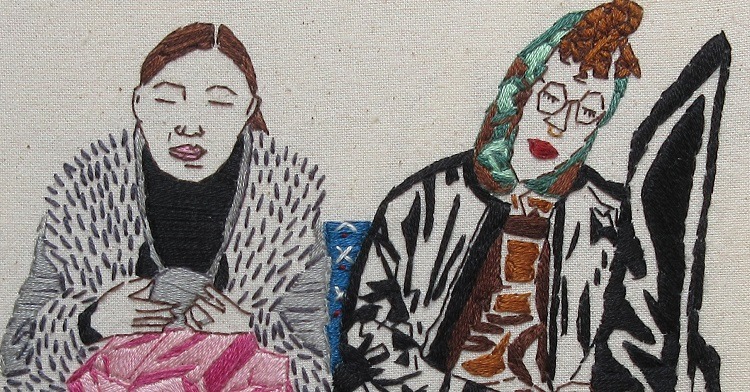
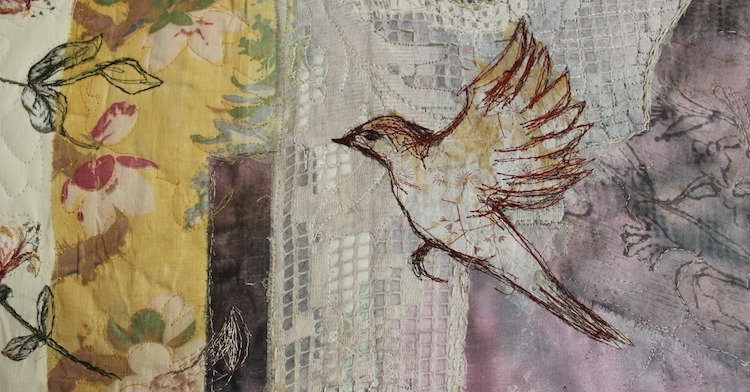
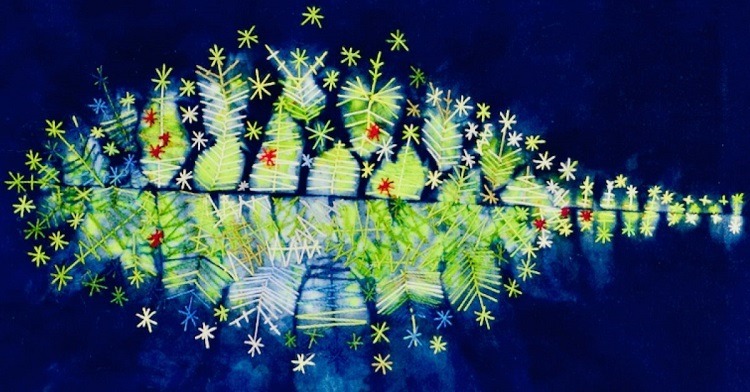
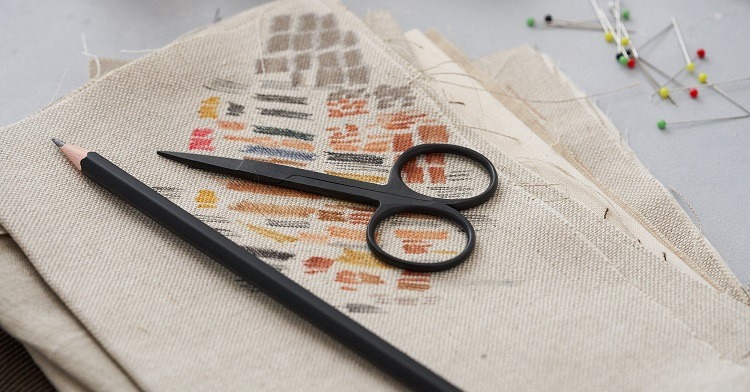
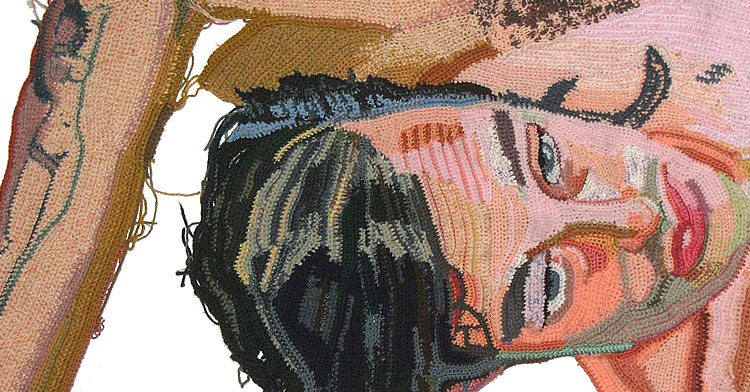
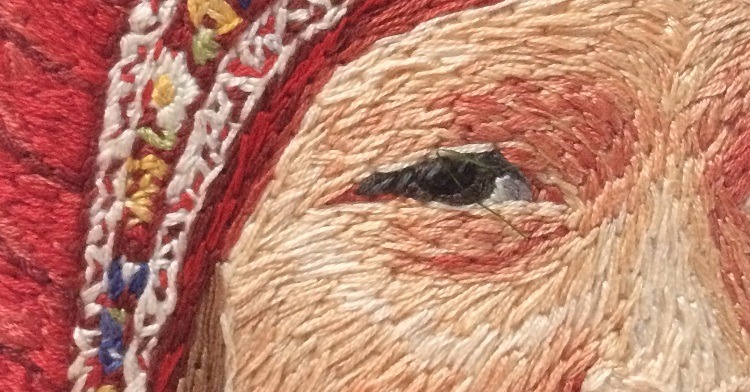
Comments